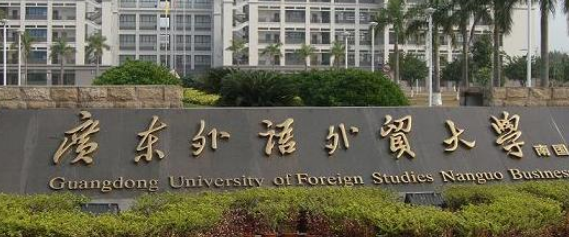About GDUFS
Guangdong University of Foreign Studies (GDUFS) is one of the prestigious universities in China which specializes in international studies and one of the key institutions of higher learning in Guangdong Province in South China. The University was established in June 1995 through the merger of Guangzhou Institute of Foreign Languages and Guangzhou Institute of Foreign Trade. The former, one of three institutes of foreign languages in that era (the other two being Beijing Institute of Foreign Languages and Shanghai Institute of Foreign Languages) under the direct jurisdiction of the State Education Commission (presently Ministry of Education), witnessed its establishment in the year 1965. The latter was founded in 1980, and was one of the four institutions of international trade directly under Ministry of Foreign Trade and Economic Cooperation (presently Ministry of Commerce).

The University is situated in Guangzhou, a city with a long history and rich cultural legacy and the economic hub in South China. It boasts three campuses, namely North Campus, South Campus and Dalang Campus, with a total area of 145 hectares. The North Campus, which covers an area of 55 hectares, is located at the northern foot of Baiyun Mountain; the South Campus, with an area of 73 hectares, is situated in Guangzhou Higher Education Mega Centre in Panyu District, Guangzhou; and Dalang Campus, having an area of 17 hectares, lies in Dalang, Baiyun District of Guangzhou. With fine surroundings featuring green trees, crystal streams, scenic bridges and fresh air, the University can well serve as an ideal place for teaching, learning and research.
Currently the University offers 52 undergraduate majors in 19 faculties and departments, which fall into 7 disciplines, namely literature, economics, management, law, engineering, science and education. Even as early as 1981, the University (then Guangzhou Institute of Foreign Languages) already had the qualification to confer MA degrees, and in 1986 it became eligible to award doctoral degrees. The University stands among those which enjoy such qualification and eligibility ever since the country resumed the postgraduate education programs. Presently the University has one Post-doctoral Research Station, and offers one Category I discipline PhD program, six Category II-discipline PhD programs, one Category I discipline MA program, twenty two Category II discipline MA programs and two Professional Master's Degree Programs. Of all the degree programs offered to the students, six are listed as key disciplines at the provincial level and one at the national level, and five typical major construction programs are supervised by the Ministry of Education. Altogether, there are eight undergraduate education programs recognized as distinguished at the provincial level.
The University possesses advanced teaching facilities and a sound educational environment with fixed assets totaling RMB 2 billion yuan and with a laboratory area totaling 52,000 square meters. Its two newly-built libraries at the North and South campuses cover an area of 50,000 square meters with over 1.8 million books, 3,237 domestic or foreign periodicals or journals and 26 Chinese or foreign language network databases. In addition, the library has established an IT application-oriented academic information service system featuring flexible modes of service, advanced means of management and distinctive collections of books.
Presently, the University has a teaching staff of 1,016, among whom 45.1% are full or associate professors and 84.1% are master or doctoral degree holders. In addition, it employs over 70 visiting professors and over 60 long-term foreign experts, many of whom have even become leaders of certain academic organizations at the national, provincial or municipal levels, editors or designated contributors of authoritative international journals in their specialized fields, or advisors of government organs at all levels or of certain institutions of higher learning or enterprises. It now has over 20,000 full-time students, among whom over 1,000 are MA or PhD students. In addition, it enrolls other types of students including self-taught students, refresher course students, students who receive training and foreign students learning Chinese, the number of which is over 10,000.
The University attaches great importance to, and actively conducts, academic and cultural exchanges with overseas institutions. At present, it has established links with 123 universities, academic institutions or cultural organizations in such countries and regions as the United States of America, the United Kingdom, France, Germany, Spain, Italy, Canada, Australia, Japan, Russia, Malaysia, Indonesia, Thailand, Vietnam, the Republic of Korea, Chile, Cuba, Peru, Hong Kong Special Administrative Region, Macao Special Administrative Region and Taiwan.
